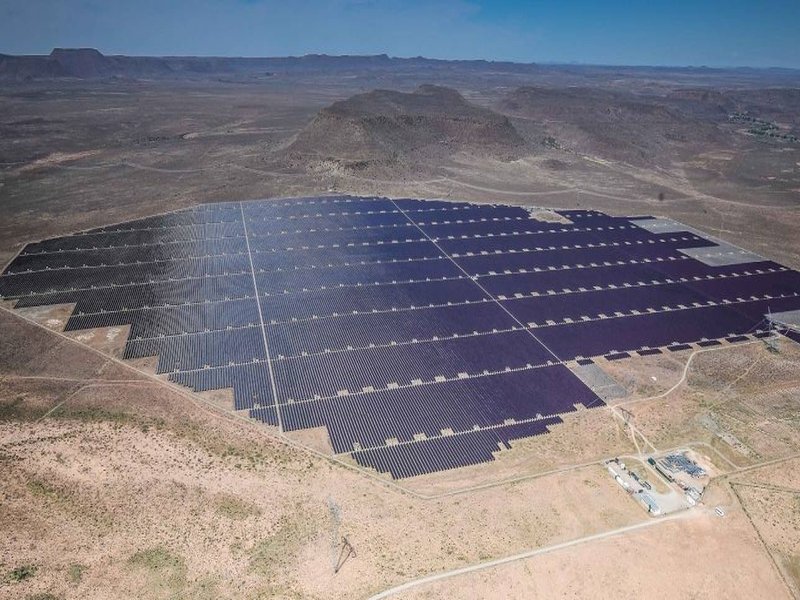In 1971 United Arab Emirates (UAE) was established as a federation of emirates. The seven emirates are there, each with its ruler, Abu Dhabi, Ajman, Fujairah, Ras Al Khaimah (RAK), Sharjah, and Umm Al Quwain. The UAE has both federal and emirate level laws and regulations that govern its renewable energy regime. It has developed policies as part of its strategy to diversify its economy away from oil and gas.
The UAE, Egypt, and Jordan officially signed the Industrial Partnership for Sustainable Economic Growth in Abu Dhabi. Ramping up renewables to 10% of the country’s total energy mix, and 25% of total power generation, could generate annual savings of USD 1.9 billion by 2030 through avoidance of fossil-fuel consumption and lower energy costs. With health and environmental benefits factored in, the transition to renewables could generate additional net annual savings of USD 1 billion to as much as USD 3.7 billion by 2030.
Jordan’s Highness Sheikh Mansour bin Zayed Al Nahyan, Deputy Prime Minister of the UAE and Minister of Presidential Affairs, witnessed the signing of the partnership with H.E. Dr. Mostafa Madbouly, Prime Minister of Egypt, and H.E. Dr. Bisher Al Khasawneh, Prime Minister of Jordan. The partnership agreement was signed by H.E. Dr. Sultan Al Jaber, UAE Minister of Industry and Advanced Technology, H.E. Dr. Nevein Gamea, Egyptian Minister of Industry and Trade, and H.E. Yousef Al Shamali, Jordan Minister of Industry, Trade and Supply.
Sheikh Mansour said “The partnership embodies the vision of President Sheikh Mohammed bin Zayed to enhance industrial integration with Arab nations and the rest of the world so we can achieve a major leap in the industrial sector and transform its potential as an economic driver. The industry is the backbone of the world’s largest economies.” He added, “Through its capabilities, effective policies, and the current focus on developing advanced technology and logistics infrastructure, we are confident that the UAE can build a global economic powerhouse by leveraging industrial partnerships across the region.”
Since 2010, rising natural gas prices in the UAE have combined with rapidly falling technology costs for solar photovoltaic (PV) systems, in particular. This has made renewables a competitive option for power generation in the UAE – an oil exporter, but increasingly an importer of natural gas. Wind power and waste-to-energy conversion have also become economic with natural gas prices above USD 8 per million British thermal units (mBtu). Beyond these existing targets in Abu Dhabi, Dubai, and other emirates, these recent developments create financial reasons for the country to accelerate its renewable energy deployment.
Al Khasawneh said “The continued active interaction and coordination at the leadership level confirms the strength of these relations with the industrial sector at the center of the partnership.
In Jordan, an attractive investment destination, the industry contributes to 24 percent of the GDP, and accounts for 21 percent of the country’s employment.”
Madbouly and Al-Jaber also agreed to set up working groups to formulate renewable energy agreements between Egypt and the UAE. “One of the promising areas of Egyptian-Emirati cooperation is the new and renewable energy sector, there are directives from President Abdel Fattah El-Sisi to increase cooperation with brothers in the Emirates in this field, in light of the increasing demand for clean energy and green hydrogen.”
Al-Jaber stated that in Egypt, hosting the COP27 climate conference is a great opportunity for Egypt to capitalize on the momentum and implement projects related to clean electricity. Al-Jaber said that there was an opportunity to take advantage of the momentum associated with Egypt’s hosting of the COP27 climate conference and to carry out projects related to clean energy. Al-Jaber praised the UAE’s cooperation on Egypt’s projects and stressed that the directives were given by Sheikh Mohamed bin Zayed Al-Nahyan, the president of the state, who always emphasized partnering with Egypt.
Two renewable energy projects were discussed by the prime minister. The first was about the Red Sea of 10,000 MW of wind energy and the second concerned the generation of 200 GW of solar and wind energy. This was done through the creation of a clean energy corridor and the transfer of it through a separate network before being sold to factories that want to get into the field of green hydrogen generation.
ADNOC- The UAE’s largest energy company – will take a 25% stake in the design stage of bp’s blue hydrogen project, H2Teesside. This will be ADNOC’s first investment in the UK. bp and ADNOC will now advance the project, initially to the next stage of design, the pre-FEED stage. H2Teesside is expected to kickstart the UK’s hydrogen economy at scale with the development of two 500MW hydrogen production units by 2030. The project is targeting the start of operations in 2027.
Agreements bring international investment into UK hydrogen, strengthening the country’s leadership in the new low-carbon industry.
Israel, Jordan, and the UAE plan to collaborate on developing renewable power projects in the Middle East amid greater cooperation among the three countries that have peace agreements supported by the US. The three countries signed Nov. 22 in Dubai “a landmark declaration of intent to build renewable electricity and water desalination capacity and address the threat posed by climate change on energy and water security in the region”
Sudair Solar Power Plant is the first project under the Public Investment Fund’s renewable energy program and is expected to produce enough energy to power 185,000 homes, offsetting nearly 2.9 million tons of emissions per year. Initial commissioning for the project is expected for the second semester of 2022. The Sudair Solar project was unveiled during the inauguration ceremony of the 300MW Sakaka solar project in April 2021, which is the first utility-scale solar energy project in Saudi Arabia.
The UAE’s investments in Jordan exceed US$17 billion and are targeted primarily at infrastructure, transportation, tourism, agriculture, industry, and renewable energy. The UAE has an advanced industrial ecosystem with a diversified mix of energy.


